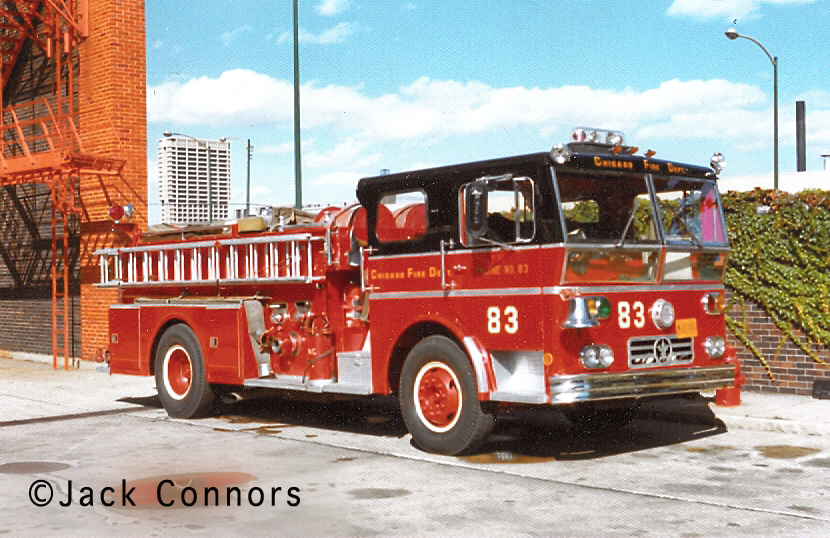Chicago received two Ward LaFrance engines in 1969. Both Model P80 units had 1,000-GPM pumps and 500-gallon water tanks. One was assigned to Engine 45 (D-347) and the other to Engine 83 (D-358). Engine 83’s unit was later assigned as a spare R-2.

Chicago Engine 83 was assigned a 1969 Ward LaFrance Model P80 engine with an Ambassador cab. One of only two units built in 1969 for the city. Jack Connors photo
This engine featured a cab that was similar to the 1,000-GPM engine purchased in 1967 without the extended bumper, and no floodlights were on this series. Unlike the 1967 unit though, these had a bell mounted under the officer’s windshield and a siren in the center of the cab’s face.





























